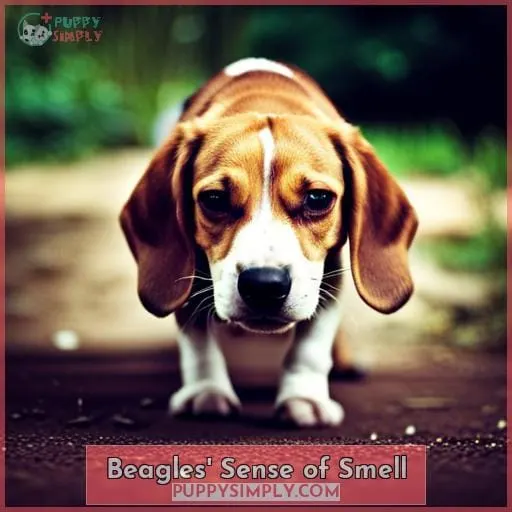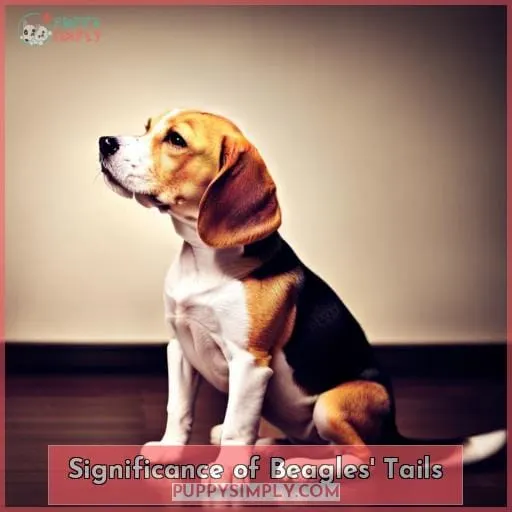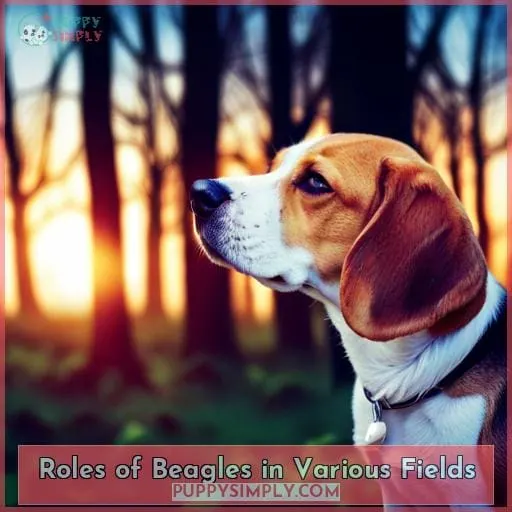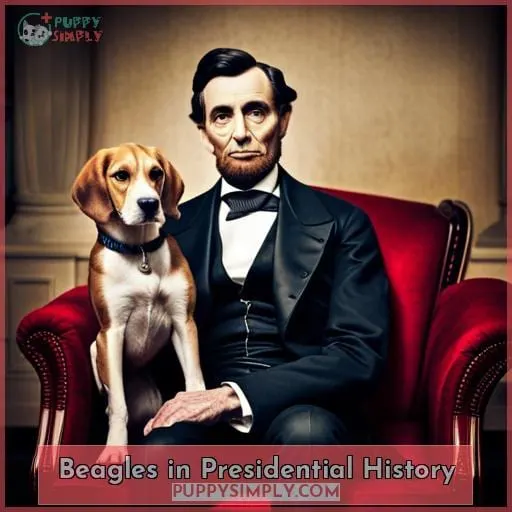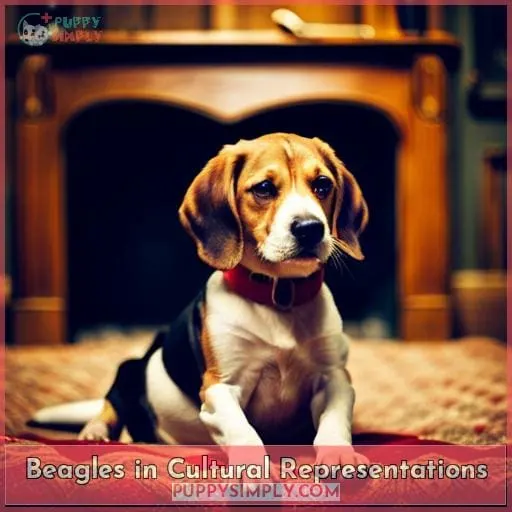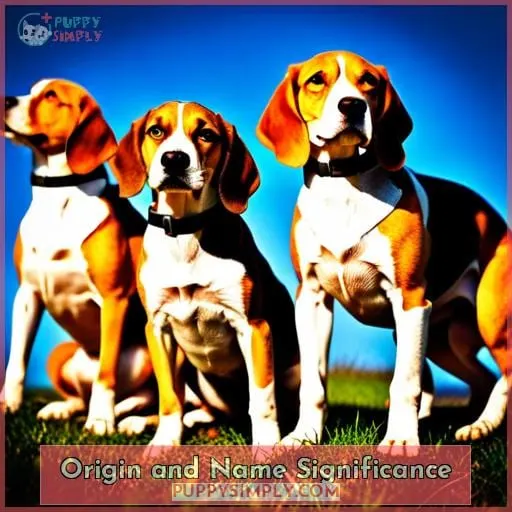This site is supported by our readers. We may earn a commission, at no cost to you, if you purchase through links.
 Explore the captivating lineage and profound prowess of Beagles, bred for an ancient artistry: hunting. Unveil their heritage, honed skills, and far-reaching cultural impact in an odyssey that traces their exceptional olfactory senses, diverse roles, and even their influence on past presidencies.
Explore the captivating lineage and profound prowess of Beagles, bred for an ancient artistry: hunting. Unveil their heritage, honed skills, and far-reaching cultural impact in an odyssey that traces their exceptional olfactory senses, diverse roles, and even their influence on past presidencies.
Delve into the tenacious tales of these beloved companions and uncover the remarkable significance of their name and origin. Experience the world through the lens of these remarkable canines, masters in their realm.
Table Of Contents
- Key Takeaways
- Beagles’ Hunting Heritage
- Beagles’ Sense of Smell
- Beagle Size Variations
- Beagles’ Vocalization Traits
- Significance of Beagles’ Tails
- Roles of Beagles in Various Fields
- Beagles’ Unique Skills in Detection
- Beagles in Presidential History
- Beagles in Cultural Representations
- Origin and Name Significance
- Frequently Asked Questions (FAQs)
- Conclusion
Key Takeaways
- Beagles were bred for hunting in England.
- They are agile, resilient, and have acute olfactory senses.
- They were specifically trained for rabbit hunting and track scents persistently.
- They play vital roles in a variety of fields due to their acute scent detection abilities.
Beagles’ Hunting Heritage
Explore the Beagles’ hunting heritage, tracing their roots as adept hunters bred for tracking small game with exceptional stamina and an unmatched sense of smell.
Originating as hunting dogs in England, Beagles embody historical hunting methods, their breeding origins steeped in the pursuit of refining tracking techniques for small game.
The evolution of their tracking methods over centuries has preserved their innate hunting instinct, making them ideal scent hounds.
Their specialized temperament as a hunting breed revolves around their agility, resilience, and acute olfactory senses.
Specifically trained for rabbit hunting, Beagles showcase unique hunting techniques characterized by their ability to follow scent trails persistently.
This historical lineage cements their position as a quintessential hunting dog, reflecting their unwavering dedication to tracking and their indispensable role in the realm of hunting.
Beagles’ Sense of Smell
Your Beagle’s remarkable olfactory prowess underpins their exceptional tracking abilities.
Their scent detection capabilities are unparalleled, with a smell sensitivity that surpasses many breeds. Beagles possess approximately 220 million scent receptors, enabling them to dissect complex odors effortlessly, akin to a master deciphering intricate codes.
This aromatic expertise translates into their role as impeccable working dogs, whether in hunting scenarios or modern-day specialized jobs. Their sense of smell isn’t just a trait; it’s a superpower, allowing them to detect scents with astonishing accuracy.
This keen ability to track scents for miles showcases their innate talent, making them an indispensable breed in various fields, from hunting companions to invaluable partners in rescue missions.
Beagle Size Variations
Continuing from their renowned scent detection abilities, Beagles vary in size, reflecting distinct classifications that contribute to their unique traits and adaptability.
- Beagle size evolution showcases variations from under 13 inches to 13-15 inches, influencing their agility and hunting prowess.
- International breed standards recognize these size distinctions, reflecting diverse preferences worldwide.
- Behavioral quirks often align with size; smaller Beagles might exhibit higher energy levels compared to their larger counterparts.
- Beagle coat variations slightly differ between size categories, impacting grooming needs and shedding patterns.
- Health considerations vary with size; larger Beagles might be more prone to joint issues while smaller ones might face different health concerns, necessitating tailored care routines.
Beagles’ Vocalization Traits
As we delve into the fascinating world of Beagles’ vocalization traits, you’ll discover their unique communication abilities and how they use barking as a primary form of expression.
Beagles are renowned for their distinct vocal range, showcasing three main sounds: barking, baying, and howling. Their barking serves varied purposes, from alerting their owners to signaling during hunting expeditions.
Understanding the psychology behind Beagles’ vocalization is pivotal in their training, harnessing their innate tendencies for effective communication. Beagle vocal training emphasizes channeling these instincts while fostering responsiveness.
Their evolution of barking, deeply ingrained through breeding, aids in their adaptability and sociability. This breed’s friendliness pairs with their communicative prowess, allowing for enhanced bonds and mutual understanding between Beagles and their human companions.
| Beagle Vocal Traits | Description |
|---|---|
| Barking | Primary form of communication, utilized for alerting, expressing excitement, and signaling during hunts. |
| Baying | Unique vocalization used primarily during hunting activities, aiding in tracking and signaling. |
| Howling | Occasional howling, often associated with expressing loneliness, separation anxiety, or distress. |
Significance of Beagles’ Tails
The white-tipped tails of Beagles serve as essential signaling markers during hunting pursuits, aiding in visibility amidst ground-scent tracking and maintaining the canine’s presence within the surrounding landscape.
These tails act as communication cues, guiding hunters in dense foliage and signaling fellow hounds during the chase.
Beyond functional aspects, the tail’s coloration is a behavioral indicator, showcasing the breed’s excitement or focus on a scent trail.
This evolutionary purpose persists, reflecting the Beagle’s temperament as a keen hunter and a companion.
For beagle breeders, the tail remains a crucial aspect, indicative of breed standards and hunting heritage.
Understanding its role extends beyond aesthetics, emphasizing its vital function in the Beagle’s history and ongoing traits, contributing to their adaptability and resilience in various environments.
Roles of Beagles in Various Fields
Did you know how extensively Beagles contribute across diverse fields due to their exceptional skills? These remarkable dogs aren’t just avid hunters but play crucial roles in various realms.
Their acute scent detection abilities find use in medical detection, identifying illnesses with incredible accuracy.
Additionally, Beagles aid in conservation efforts, assisting in identifying pregnancies in endangered species like polar bears.
In search operations, their noses are invaluable, aiding security forces in detecting illicit substances or contraband.
Their friendly demeanor also makes them perfect for educational roles, teaching children about responsible pet ownership.
From being bedbug detectors to assisting in security operations, Beagles showcase their versatility and incredible aptitude, making them indispensable across a spectrum of vital fields.
Beagles’ Unique Skills in Detection
With their exceptional olfactory abilities, Beagles excel in detection tasks, showcasing prowess in uncovering scents across various domains. Their innate talent for scent discrimination, coupled with specialized training techniques, positions them as valuable assets in working environments such as the Department of Homeland Security.
Beagles, despite their shedding coat, demonstrate unparalleled accuracy in detecting specific odors, contributing significantly to canine security initiatives. Their role extends beyond conventional expectations, aiding in disease prevention and identification in diverse settings.
Through their remarkable detection capabilities, Beagles exemplify an impressive fusion of natural talent and specialized training, making them indispensable allies in critical tasks requiring precise olfactory skills.
Beagles in Presidential History
Explore how Beagles cemented their place in American history as they roamed the halls of the White House, embodying companionship and charm for some of the country’s most notable figures.
Beagles have a rich presence in presidential history, establishing themselves as beloved Presidential Pooches. One such example is President Lyndon Johnson’s admiration for these furry friends. He’d three White House Beagles, including one named Him who even sired a litter that continued to reside in the Canine Oval Office.
These beagle companions brought joy and warmth to their owners’ lives amidst political pressures and responsibilities. From being family pets to serving practical purposes like detecting polar bear pregnancies or helping with beagle feeding experiments, these canine darlings left an indelible mark on political pet history through their loyal devotion and unwavering love.
Beagles in Cultural Representations
Beagles have had a significant impact on pop culture, from being featured in cartoons to being referenced in music.
They’ve appeared in movies such as 101 Dalmatians and Beverly Hills Chihuahua, and on TV shows such as The Andy Griffith Show and The Golden Girls.
Beagles have also been featured in books, such as The Beagle Who Saved Christmas and The Adventures of Bailey the Beagle.
In addition, beagles have been used as mascots for organizations such as the Boy Scouts of America and the United States Air Force.
Origin and Name Significance
Since Beagles are known for their excellent sense of smell, it’s likely that their name derives from the French word begueule, meaning open throat.
They were originally bred for hunting purposes and are still used today by the Beagle Brigade in airports to detect food.
Beagles are also popular family pets and are known for their friendly, playful personalities.
Frequently Asked Questions (FAQs)
What are the different types of Beagles?
There are two main types of Beagles:
- The American Beagle
- The English Beagle
The American Beagle is larger and has a shorter coat, while the English Beagle is smaller and has a longer coat.
How much exercise do Beagles need?
Beagles are bred for hunting and need at least 30 minutes of exercise a day.
They’re an active breed that loves to run and play.
What are the best ways to train a Beagle?
Beagles are bred for hunting and tracking, so they need plenty of exercise.
The best way to train a Beagle is to use positive reinforcement and patience.
What are some common health problems in Beagles?
Beagles are prone to a variety of health problems, including:
- Hip dysplasia
- Elbow dysplasia
- Eye problems
- Allergies
Be sure to take your Beagle to the vet for regular checkups to catch any potential problems early on.
What are the best foods for Beagles?
Beagles are bred for hunting and tracking.
They’re a small to medium-sized breed with a short, smooth coat.
They’re known for their friendly, playful, and affectionate temperament.
Conclusion
To conclude, Beagles are a breed of dog that has a rich heritage and remarkable skills, and can sometimes exhibit protective aggression.
Bred for hunting, their exceptional olfactory senses make them experts in tracking scents.
Their size variations and vocalization traits add to their charm and versatility.
Beagles have played important roles in various fields, from search and rescue to therapy work.
They’ve even made their mark in presidential history.
With their cultural impact and fascinating origin, Beagles continue to be beloved companions and masters in the art of hunting.


